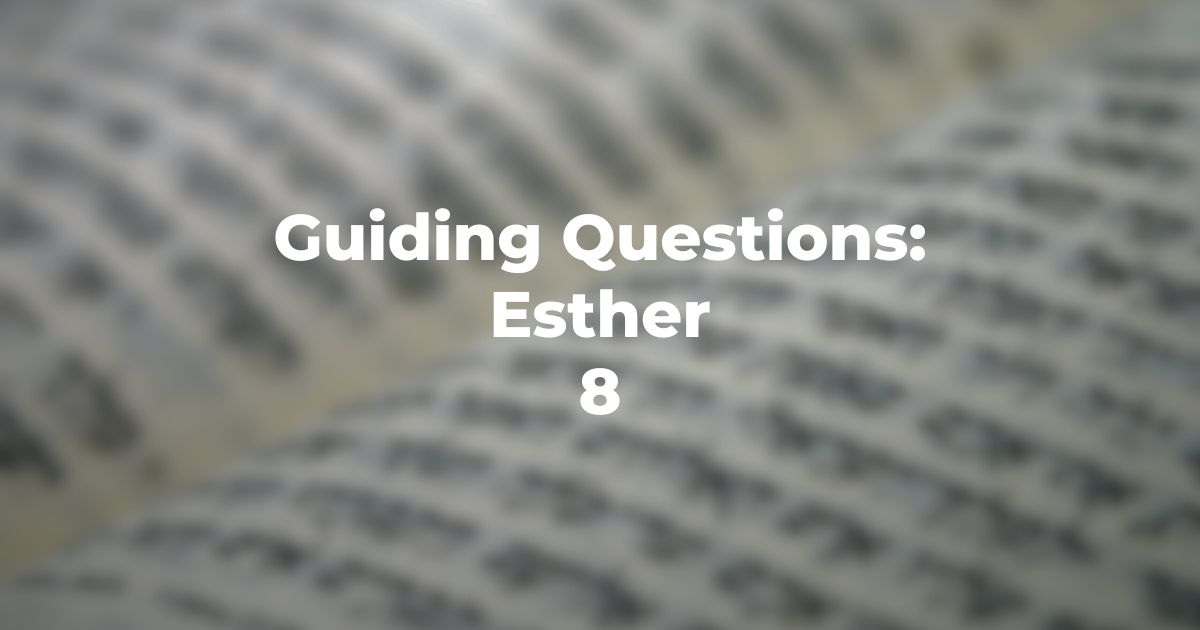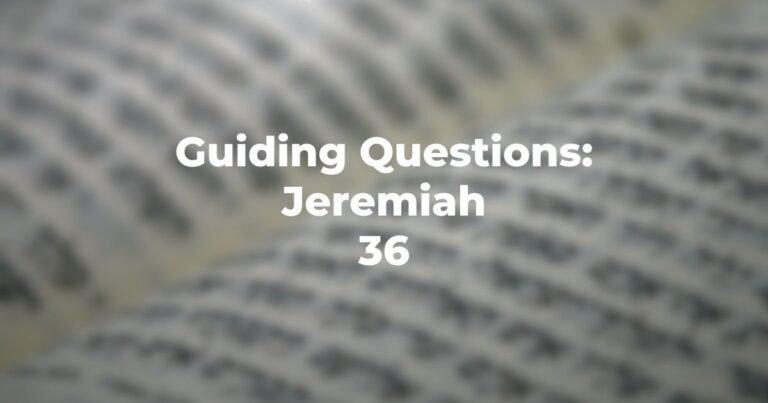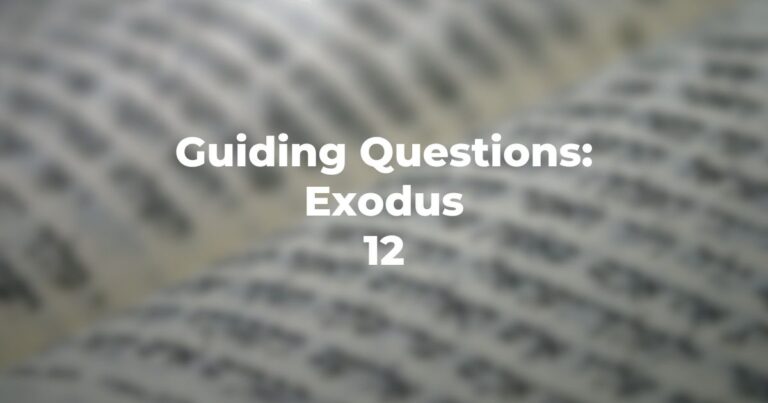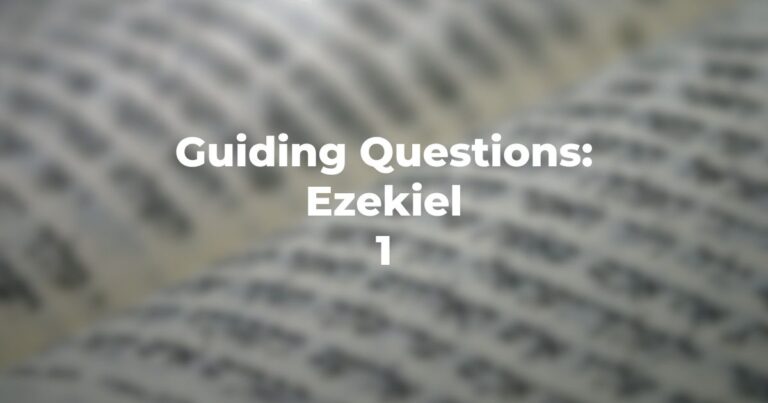- What single word recurs in Esther 8 more than ever before (see Esther 8:1, Esther 8:3, Esther 8:5, Esther 8:7-9, Esther 8:11, Esther 8:13, Esther 8:16-17)? Why this particular emphasis here?
- After all that has happened, does the king feel any compassion or remorse for the decree to destroy the Jews?
- What are the two things the king does (Esther 8:1-2) to “right the wrongs”?
- Why does Esther need to prostrate herself and beg for the lives of her people when she had already pleaded for them in the previous chapter (Esther 8:3-4)?
- In her plea to the king (Esther 8:5-6), how does Esther avoid linking him to the actual plot to destroy the Jews?
- In what ways does Ahasuerus remain firm in his cold, compassionless personality, removing himself entirely from concluding the matter?
- From Esther 8:9 (whose 43 Hebrew words incidentally, make this the longest sentence in Scriptures) what things do we discover that the Jews of Persia preserved from their own culture?
- In the writing of the counter-decree (Esther 8:1-12) why did they virtually quote verbatim from Haman’s original edict of extermination (Esther 3:13)?
- Where in our liturgy is Esther 8:16 quoted? What phrase is added to that quotation?
- There is no record of mass conversion to Judaism in the Persian or Greek period nor is the word for proselytism in that period derived from Yehudi (Jew) but from Ger (sojourner, stranger); what other possible action may we assume was performed by those upon whom “the fear of the Jews had fallen”?
Author
-

Exploring Judaism is the digital home for Conservative/Masorti Judaism, embracing the beauty and complexity of Judaism, and our personal search for meaning, learning, and connecting. Our goal is to create content based on three core framing: Meaning-Making (Why?), Practical Living (How?), and Explainers (What?).
View all posts




